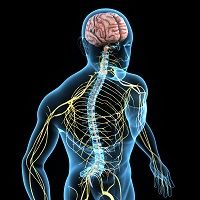Article
Neuropathic Pain: Discovery Enhances Opioid Analgesia
Author(s):
Treating neuropathic pain with opioids can be done smarter and without upping the dosage, suggests a report in Pharmacological Reports.

Treating neuropathic pain with opioids can be done smarter and without upping the dosage, suggests a report in Pharmacological Reports.
Researchers from the Polish Academy of Sciences in Poland conducted experiments to determine the role of P2X4 receptors in neuropathic pain. They analyzed the behavior of a carbon monoxide donor, CORM-2, in rat models with chronic constriction injury (CCI) to the sciatic nerve. Two major findings appeared as a result of the experiments. Not only did CORM-2 reduce pain, but it enhanced the analgesic properties of opioids.
The team found that the carbon monoxide donor “significantly reduced CCI-induced allodynia and hyperalgesia.” It reduced spinal microglial, which is responsible for hypersensitivity, and/or astroglial activation, a type of cell found in the central nervous system.
Whether through intraperitoneal (10 mg/kg) or intrathecal (20 µg/5 µl) administration, CORM-2 provided pain relief. The team was the first to show that even with just one intraperitoneal administration increased morphine/buprenorphine effects when compared to just the opioids by themselves.
“When CORM-2 was administered for seven consecutive days, the antinociceptive effect of CORM-2 after CCI was stronger on day seven than on day two, which indicates that this effect built up over time,” the authors confirmed.
The results present a possible target for providing pain relief to those with neuropathy without the increased usage of addicting medication. This is an especially important finding since it was recently revealed that opioids may not have long-term benefits for neuropathic pain.
“Our data suggest that P2X4 receptors indeed play a significant role in neuropathic pain development, suggesting that their blockade may have potential therapeutic utility,” the authors concluded.





